There is perhaps no place in the Hudson Valley that can serve as a symbol of family pride and ambition (thwarted or otherwise) better than Staatsburgh, home to five generations of the Livingston family, which had no surfeit of either.
The first house on the site was the southernmost in a chain built by nine of the Livingston siblings who grew up at Clermont. Constructed for Gertrude Livingston and her husband 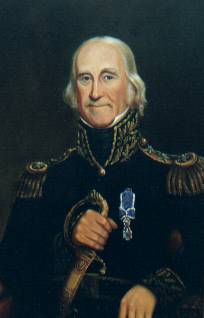 General (later Governor) Morgan Lewis, it commanded the crest of a hill on a portion of her 20,000-acre dowry. Little hard evidence exists as to what the original structure looked like, other than being described “as capacious as it was ugly”. After it burned to the ground in 1833, Morgan Lewis replaced it with an elegant Greek revival mansion.
General (later Governor) Morgan Lewis, it commanded the crest of a hill on a portion of her 20,000-acre dowry. Little hard evidence exists as to what the original structure looked like, other than being described “as capacious as it was ugly”. After it burned to the ground in 1833, Morgan Lewis replaced it with an elegant Greek revival mansion. With its six bay façade, wide wings, and massive portico supported by four monumental Doric columns, the grand edifice might easily have been mistaken for a civic building, bank, or institution, which suited the temperament of Margaret, their sole child and eventual owner of the property perfectly.
With its six bay façade, wide wings, and massive portico supported by four monumental Doric columns, the grand edifice might easily have been mistaken for a civic building, bank, or institution, which suited the temperament of Margaret, their sole child and eventual owner of the property perfectly.
Married to her distant cousin Maturin Livingston, Margaret gained a fearsome reputation as a hard-nosed, imperious dowager. Born into one of New York’s most illustrious Colonial families, she was alarmed by the newer names and money beginning to slip into the tightly knit folds of New York Society. She made it her mission, spending a good deal of time and energy in the process, to ensure that those she considered beneath her were kept at a distance. Papers (which in the nineteenth century chronicled the doings of society with the same enthusiasm as they cover celebrities lives today) noted that a mere 80 guests were invited to her 1841 New Years Day reception, a full half of them related to her by marriage or blood (which, given the fact she married a cousin, actually meant both). Ironically it appears the people who perhaps suffered the most from her exclusionary attitude were her own 12 children. Unless married a distant relative, they inevitably wed far below their station in her narrow view, and she did not hesitate to let them or the unfortunate spouse know it. From her Greek temple on the hill, Mrs. Maturin Livingston could look down in all directions with smug satisfaction, both literally and figuratively, on those in less vaunted positions.
Though perhaps not the most noble of family traits, this inbred imperiousness not only prevailed but grew as it passed down through subsequent generations, reaching its zenith under Margaret’s granddaughter Ruth.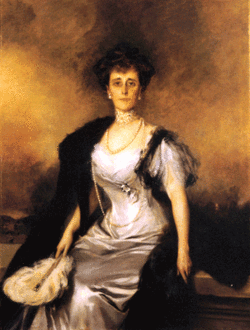 Ruth Livingston had the financial good fortune to marry Ogden Mills in 1882, son of the fabulously wealthy Darius Ogden Mills, who made his fortune in the California during the gold rush era. If Ogden represented the “New Money” that her (conveniently already deceased) grandmother would have abhorred, Ruth could take solace in the fact that the Mills fortune was based in banking, not mining interests. She was also a realist. By this era her distant kinswoman Caroline Schermerhorn Astor ruled New York Society, who had opened its doors sufficiently to let in more of the “arrivistes” whose immense fortunes couldn’t be ignored. She also made it far more elaborate, instituting new formal standards that transformed the playing field. Liveried servants, endless-coursed dinners served on gold and silver-plate, tiaras, quadrilles and French-influenced etiquette replaced the simpler stolid values and entertainments of society’s earlier generation. One could still be a part of society with proper lineage, a narrow brownstone and an upper middle class income, but to compete at the top tier required a large fortune. With her unapproachable heritage bolstered by the Mills’ millions, Ruth didn’t just want to compete; she wanted to rule. Even if it meant taking down cousin Caroline a notch or two in the process.
Ruth Livingston had the financial good fortune to marry Ogden Mills in 1882, son of the fabulously wealthy Darius Ogden Mills, who made his fortune in the California during the gold rush era. If Ogden represented the “New Money” that her (conveniently already deceased) grandmother would have abhorred, Ruth could take solace in the fact that the Mills fortune was based in banking, not mining interests. She was also a realist. By this era her distant kinswoman Caroline Schermerhorn Astor ruled New York Society, who had opened its doors sufficiently to let in more of the “arrivistes” whose immense fortunes couldn’t be ignored. She also made it far more elaborate, instituting new formal standards that transformed the playing field. Liveried servants, endless-coursed dinners served on gold and silver-plate, tiaras, quadrilles and French-influenced etiquette replaced the simpler stolid values and entertainments of society’s earlier generation. One could still be a part of society with proper lineage, a narrow brownstone and an upper middle class income, but to compete at the top tier required a large fortune. With her unapproachable heritage bolstered by the Mills’ millions, Ruth didn’t just want to compete; she wanted to rule. Even if it meant taking down cousin Caroline a notch or two in the process.
To begin, she needed the proper environments in which to stage her campaign. The Mills had Richard Morris Hunt build a Venetian gothic townhouse for them on East 69th street and kept a large villa called Ocean View in Newport for the summer seasons.
and kept a large villa called Ocean View in Newport for the summer seasons.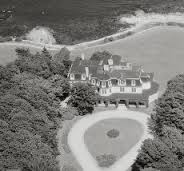 It was at her family home Staatsburgh, which they inherited from Ruth’s father, where her intentions would be most visibly apparent. McKim Mead and White was hired to transform the monumental Greek temple into a French-inspired palace. Two huge wings containing a massive marble-clad dining room and a cavernous paneled library ballooned to the north and south of the original house.
It was at her family home Staatsburgh, which they inherited from Ruth’s father, where her intentions would be most visibly apparent. McKim Mead and White was hired to transform the monumental Greek temple into a French-inspired palace. Two huge wings containing a massive marble-clad dining room and a cavernous paneled library ballooned to the north and south of the original house.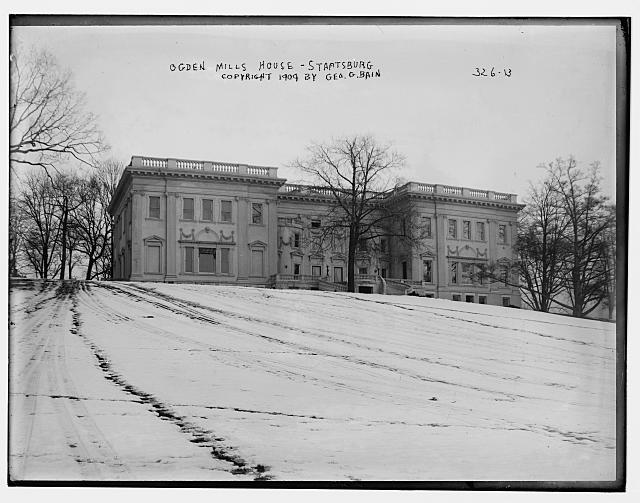 To compensate for the shift in scale between the new and old sections, a third floor was added to the original house, its four-columned Doric portico replaced by a taller six-columned ionic version. Decorative cartouches, swags and pilasters were applied to the facades to enliven the overall appearance.
To compensate for the shift in scale between the new and old sections, a third floor was added to the original house, its four-columned Doric portico replaced by a taller six-columned ionic version. Decorative cartouches, swags and pilasters were applied to the facades to enliven the overall appearance.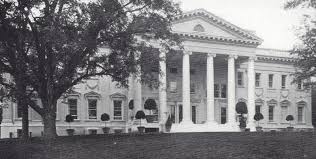 Inside, old family portraits were hung on walls overlooking new gilded furniture in the style of the ancien regime.
Inside, old family portraits were hung on walls overlooking new gilded furniture in the style of the ancien regime.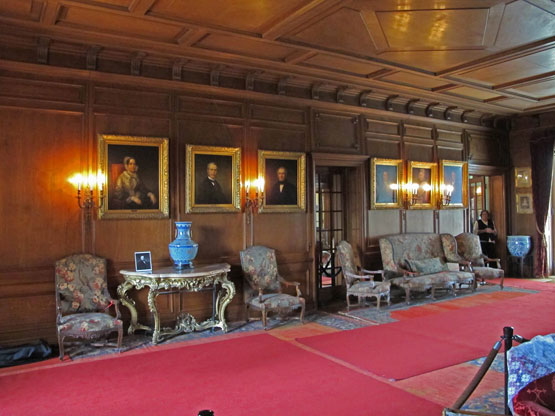 Predating the Vanderbilt mansion in Hyde Park and the Astor’s Casino at Rhinecliff, no other place in the Hudson valley at that time could come close to competing in terms of scale or splendor with Ruth and Ogden’s new 65-room palace.
Predating the Vanderbilt mansion in Hyde Park and the Astor’s Casino at Rhinecliff, no other place in the Hudson valley at that time could come close to competing in terms of scale or splendor with Ruth and Ogden’s new 65-room palace.
With a staff large enough to host 100 guests for dinner without calling in extra help, Ruth proceeded to entertain lavishly and oh so correctly. During the fall and spring seasons she hosted formal weekend house parties at Staatsburgh, filling the mansion with carefully culled lists of those she deemed socially acceptable. By the late 1890s she decided to take direct aim at Mrs. Astor’s position, letting it be known that she felt poor cousin Caroline had opened the doors of society a bit too wide. In a move that would have made her grandmother proud, Ruth publically wondered how on earth there could possibly be 400 people in society, when there were really only twenty families that really mattered (conveniently a good deal of them happening to be her Livingston relations)? In the end she failed in her bid to wrest control of society by whittling down its size. Even her most ardent supporters came to realize they didn’t want to spend each week looking at the same few familiar faces across every dinner table and ballroom. Ruth’s list grudgingly grew to seventy-five, then one hundred and fifty. Eventually she tried a different tack – if she couldn’t dethrone Caroline Astor, she could succeed her. As the nineteenth century passed into the twentieth, Caroline began to age and her grip on society began to loosen while Ruth waited in anticipation. Society architect Horace Trumbauer redecorated her New York Mansion, adding a new ballroom. The New York Times, in covering her entertainments, noted that the guest list to her annual ball (which by the early 1900s numbered between 300 and 350 people) was amongst the most restrictive in Society, recorded just as many, if not more Vanderbilts and their ilk as Livingstons on them.
When Caroline Astor finally died in 1908, Ruth, having made all the right moves, was ready to step up and assume her scepter and crown.
A funny thing happened on her way to the dais, however. Society had shifted again, even from Caroline Astor’s heyday a mere decade before. Socialites didn’t just want to attend stately entertainments and formal soirees; they also wanted to have fun. While the regal Ruth excelled at the former, when it came to the latter, not so much. There was a just little too “froid” in her “sang”, as it were. In Newport she watched in horror as Mrs. Astor’s tiara was snatched and broken into three pieces by “The Triumvirate” of Mrs. Oliver Hazard Perry Belmont (a divorcee?!), Mrs. Stuyvesant Fish, (who threw parties with dogs and monkeys as guests of honor!?), and the vivacious Tessie Olerichs, whose new Comstock Lode fortune was uncomfortably close to the source of the Mill’s own money for her comfort. Meanwhile in New York, though she was still regarded as one of Society’s top hostesses, the Vanderbilt clan with a fortune only 3 generations old, came to represent the apex of the “Old Guard” with Mrs. Cornelius Vanderbilt and Florence Vanderbilt Twombly becoming the Queen Grande Dames who everyone looked at to maintain the standards of the older era. As galling as all this must have been, Ruth still had Staatsburgh and the Hudson Valley, where she could rule unchallenged. Each fall and spring she would continue to fill the house with guests, entertaining lavishly, if predictably and stiffly. Invitations were still eagerly sought, and the carefully chosen friends, relations and sycophants, continued to congregate in palatial splendor atop the hill and look down on those below.
After her death in 1920, the estate was used less often. When her son died 17 years later, no one else in family wanted to assume the headache or expense of maintaining the enormous place, donating it instead to the State of New York. Today it is operated as a house museum, popularly known as the Mills Mansion. The hordes of tourists who march through gawking at the opulence probably never realize the full extent of the campaigns that were planned and waged there by the family to keep all but the select few from entering. From the outside, the two enormous wings that still threaten to overshadow the enlarged original center portion of the mansion, stand as mute monuments to the “Woman Who Would be Queen”.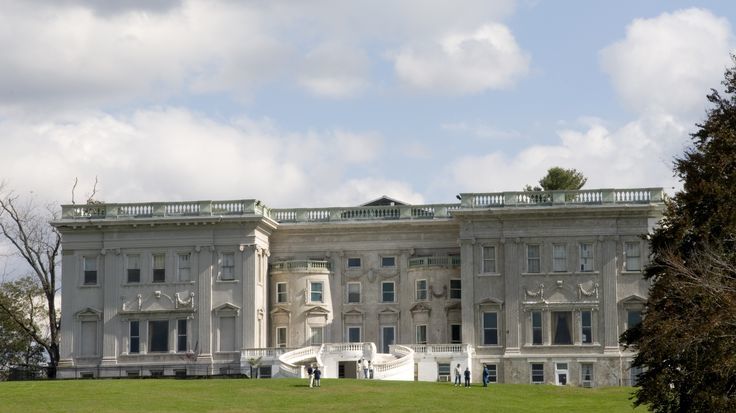
This was the final Installment in a four part series on the stories of some of the Hudson Valley’s well-known historic mansions seen through their exteriors
